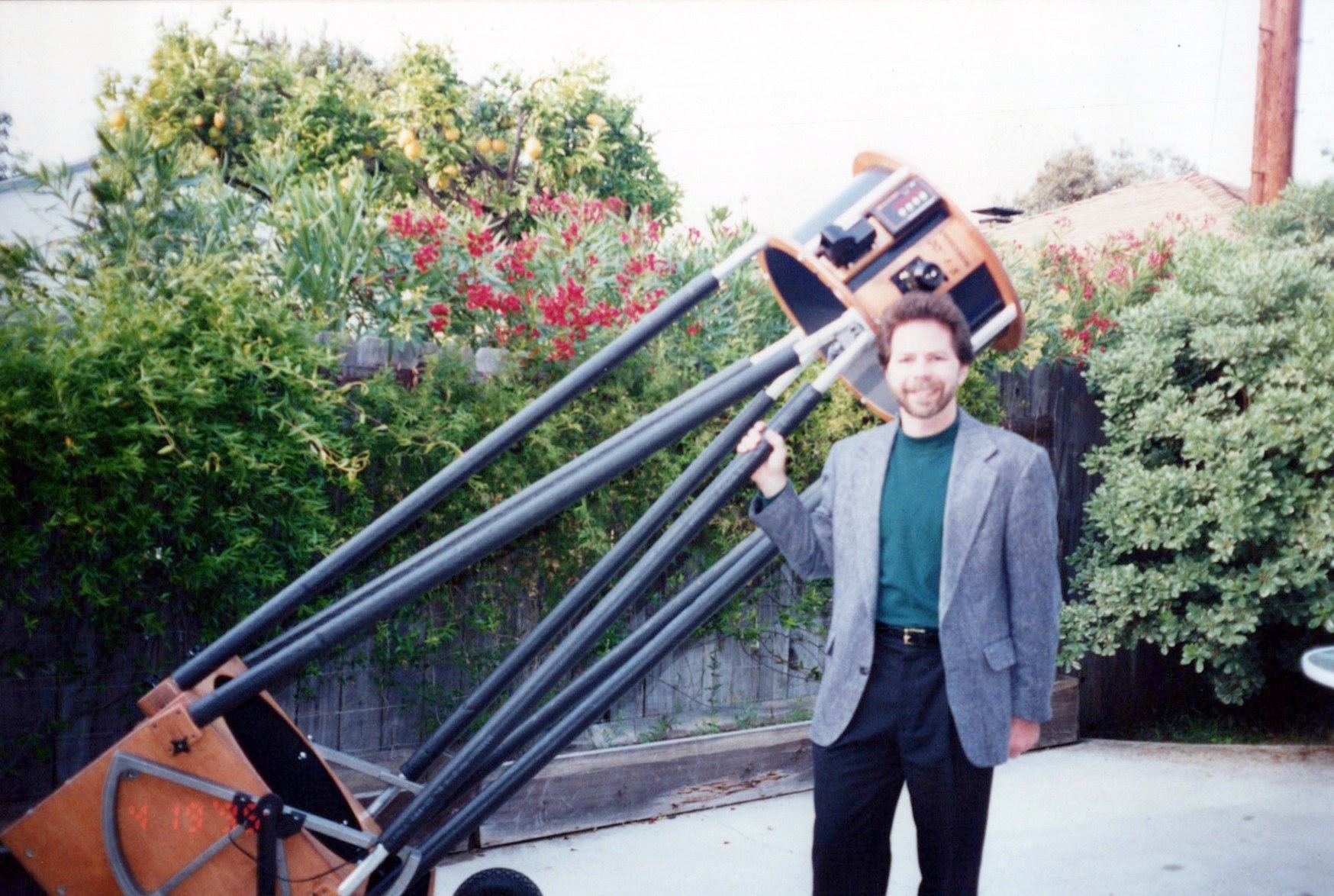Astronomy
Ask an amateur astronomer why they are in the hobby and you may be compelled to listen to romantic soliloquies:
“Man must rise above the Earth—to the top of the atmosphere and beyond—for only thus will he fully understand the world in which he lives.” (Socrates)
“Astronomy compels the soul to look upward, and leads us from this world to another.” (Plato)
“The purpose of life is the investigation of the Sun, the Moon, and the heavens.” (Anaxagoras)
My fascination with astronomy is more pedestrian, but I believe more interesting – light. Light is the substance that conceptually binds the quantum to the relativistic worlds. Relative spatial reference frames have been around since Galileo, but light (or the constancy of its speed in all reference frames) spawned the Einsteinian revolution. Newton thought that light was made of particles. A century after Newton’s Opticks the prodigy Thomas Young conducted his two-slit experiment to support a wave theory of light. Today we accept light as being both wave and particle, as with all matter. Light is our window to reality. If I were to study any other discipline, it would be optics and the physics of light.
Humans are fortunate to live in a world with an atmosphere that provides us energy and life; but one that is also transparent, providing a window to other worlds far away. Compare our providence with the watery worlds of lakes and oceans. Fish, cephalopods and marine mammals might (or might not) have brains complex enough to imagine space travel and modern physics. But they can’t clearly see the stars through the surface of the water. They would have scant motivation or information to construct even a fraction of Babylonian cosmology, let alone anything resembling modern space physics and engineering. Telescopes and rockets are inaccessible technologies for creatures living under water.
And because of our good fortune to live on the surface of a world which lets light through to our eyes and instruments, we can practice astronomy. Astronomy is the oldest science; everything before was just accounting. It engendered other sciences – arithmetic, geometry and trigonometry, originally in the Babylonian base-60 system that we still use for time, trigonometry and astronomy; regression and other statistical methods used for astronomical predictions; and navigation and geography.
When I was growing up, the skies were relatively free of light pollution, and visual astronomy allowed me to see all sorts of wonders. I can still see these in remote corners of New Mexico and Arizona, but in general light pollution has restricted my astronomy to astrophotography with filters, and to electronically assisted astronomy. There have been many technological advances over the past two decades that have enabled these hobbies – most importantly the smartphone. The smartphone revolution c. 2008 (iPhone 1 and Motorola Droid) created an industry of low cost, low energy, portable computers, GPS position monitors and image sensors. Many niche industries have piggybacked on the economics and scale of the smartphone industry, one of them being astrophotography. Hobbyists like myself have benefited from this revolution in electronics.
My Equipment
Hubble Optics CDK 10" + UL14 f/4.6 + Meade 8" + RASA 8 + Lunt 50mm Ha Double Stack + Mewlon 180c
10Micron GM1000HPS + iOptron AZ Pro + HAZ31
FLI ML11002M + ZWO ASI2600MC Pro & ASI183MC & 7x2 EFW
N.I.N.A., SharpCap and PixInsight, Model Creator
